
Our world is filled with truly remarkable natural wonders. A few, in fact, are so incredible that you find it hard to believe they actually exist. Some natural wonders, like the Grand Canyon or the Victoria Falls, captivate us with their sheer size and magnificence. However, there are countless other places hidden across different parts of the world that are known for being weird, mysterious, creepy, and at times, seemingly impossible. Here we'll show you 8 of such places. They are so unusual that some of them appear to be from a different planet altogether.
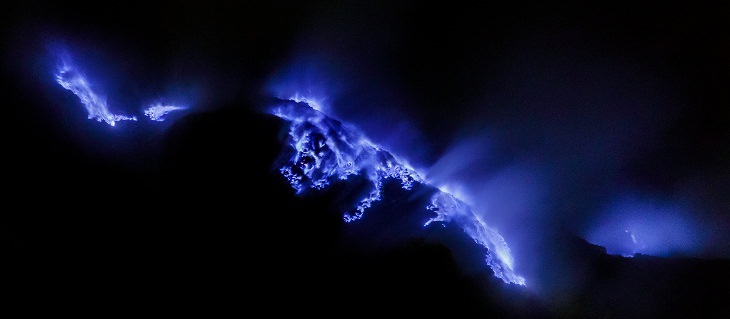
Image source - Wikimedia Commons
Located on the island of Java in Indonesia, the Kawah Ijen crater is a one-of-a-kind phenomenon. Also known as the blue volcano, it has become famous because, instead of producing the usual red lava and black smoke, it generates bright blue flames. This happens when the volcano's sulfur-rich gases are exposed to the air temperature above 360°C (680°F). Sometimes, these flames can rise as high as 16 feet (4.9 m) when they touch the air.
At night, you can see blue lava-like rivers flowing through its crevices, making for a spellbinding sight. From time to time, these gases can liquefy, which is why people often mistake them for lava.
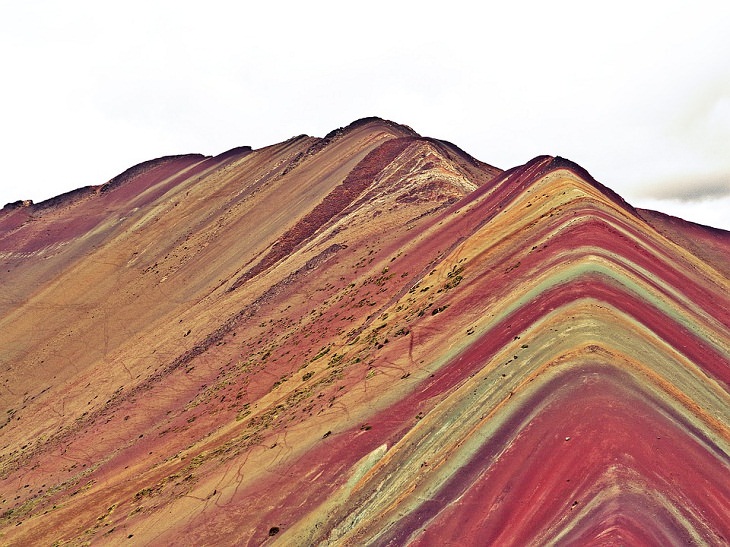
When you first look at it, you would feel like you are inside some fantasy animated movie. After all, how do you register a mountain that is striped with shades of yellows, greens, reds, and purples? The Rainbow Mountain, also called Montaña de Siete Colores (Mountain of Seven Colors), is located in the Andes in the Cusco region of Peru.
The place is believed to be holy and sacred. But the reason behind the magnificent colors in these mountains lies in the ice that used to cover the area. Over time, when the ice melted and the ground continued to erode, the different mineral layers were exposed. This left a series of multicolored stripes along the ridges and makes the mountains appear rainbow-colored.
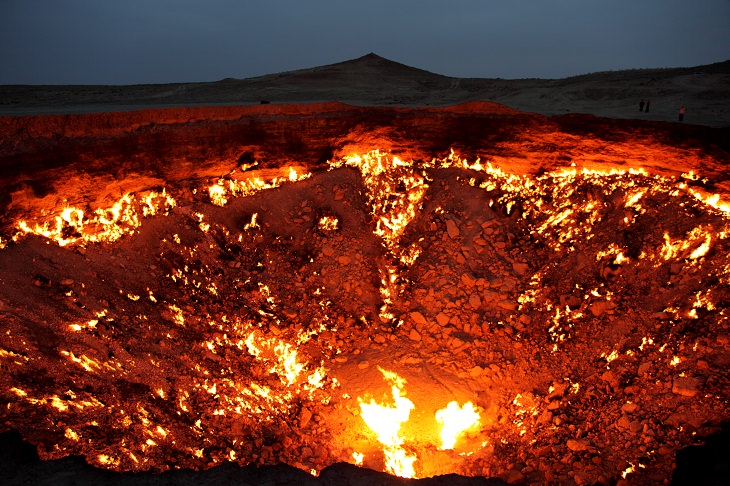
Image source - Wikimedia Commons
Situated in Derweze, a village in Turkmenistan, in the middle of the Karakum Desert, is a frightening place known as the Darvaza gas crater. It is actually a fiery crater that has been nicknamed “The Gates of Hell” and its blazing glow can be seen for miles around.
The Door to Hell gas crater was created accidentally in 1971 when a Soviet drilling operation tapped a cavern filled with natural gas. The ground caved in after that and left a huge hole that was 70 meters (229 feet) in diameter. Poisonous fumes began leaking at an alarming rate from the cavern and to rein it in, the Soviets set the hole on fire, hoping it would stop the burning in the next few weeks. Decades have passed, but the fiery pit is still burning strongly, leaving even the best scientists befuddled.
The government now hopes that the site will become a tourist attraction.
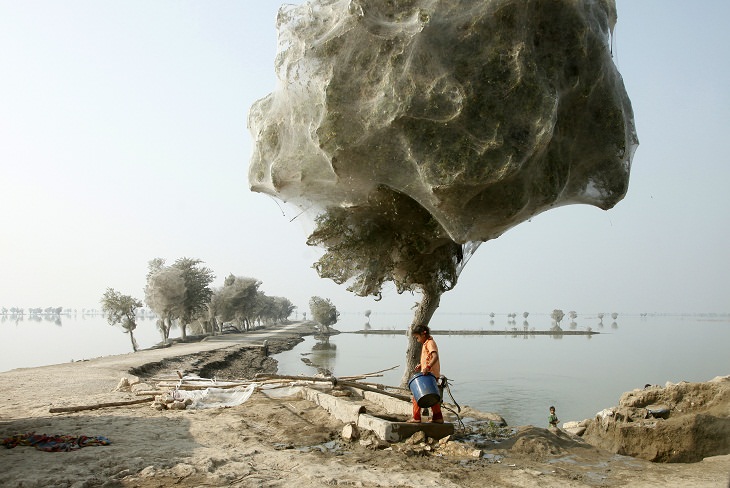
Image source - Wikimedia Commons
In 2010, many Pakistani cities and villages were ravaged by vicious rainfall and floods. Curiously, this resulted in millions of spiders seeking refuge in trees. This was particularly the case in the trees around the farms and rivers in the village of Sindh. Since the water took a long time to recede, the spiders took shelter in the trees and slowly established their homes in them. Over time, they managed to completely envelop these trees with their webs. This made for a bizarre sight and the people of Sindh hadn’t seen anything like it before.
Initially, the pictures of the trees covered with spider web were considered to be a hoax. However, National Geographic confirmed that the odd phenomenon was actually true. In fact, if you stand under one of these trees, a few arachnids are bound to drop on your head.
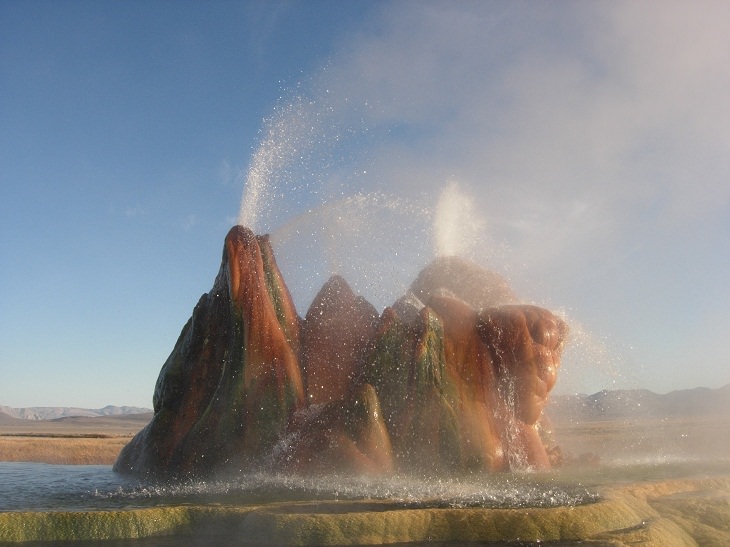
Image source - Wikimedia Commons
The Fly Geyser is a small geothermal geyser located in Washoe County, Nevada, and is an incredible accidental wonder. A product of a human mistake, this rainbow-colored geologic wonder was accidentally created in 1964 when a company was looking for a geothermal source of energy. They drilled a well and struck water that was 200 degrees Fahrenheit (93 degrees Celsius) hot. Since the water was too hot to be used, they tried to re-seal it, but apparently, it did not hold. Some even say that the well wasn’t even properly sealed. Whatever may have been the case, it resulted in the continued spewing of mineral-rich water for decades and left a peculiar and beautiful conical formation.
Fascinatingly, a five-foot jet of water continually shoots from the Fly Geyser. Moreover, it is ever-growing because of the minerals from the geothermal water pocket stored beneath the desert surface. The alien-looking mound has a brilliant and bright color, which it gets from the thermophilic algae that cover it. Looking at it from a little distance, you will certainly get a fantasy film feel from it.

Image source - Wikimedia Commons
There is a short stretch of river in the Philippine jungle that is jaw-droppingly beautiful and miraculously clear. The Hinatuan Enchanted River in Mindanao, Philippines, is so amazingly bright with sapphire blue hues, it looks rather unbelievable at times. It got its moniker “Enchanted River” from a poem by Modesto Farolan and has been fascinating tourists from around the world for a while now.
Nobody knows for certain where this saltwater river emanates from. However, there is a prevailing theory that proclaims that the water is derived from an underground cave system. Many local legends also say that fairies added some mesmeric colors of sapphire and jade to the river, which gives it the brilliant and unreal color.
Whatever may be the case, the ethereal beauty of the river is truly enchanting.
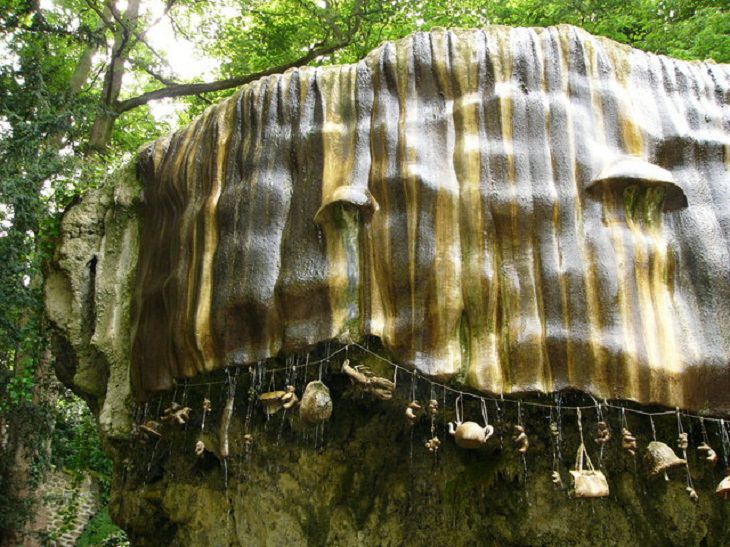
Image source - Wikimedia Commons
Imagine a body of water that turns objects into stones. Sounds like a part of a fairytale you've read as a child, right? However, Mother Shipton’s Petrifying Well on the banks of the Nidd River is known to do exactly that. Located in North Yorkshire, England, this well has been a visitor’s attraction since the 1630s. Back in the day, it was believed that the well was cursed by the devil because any object that came into contact with its waters turned into stone. It was also assumed that Mother Shipton, the famous soothsayer who lived in these parts, had cursed it.
Scientific analysis of the water eventually revealed that it has an unusually high mineral content that precipitates over objects. This creates a hard shell of mineral over the object, quite like the formation of stalactites and stalagmites in caves. What is remarkable, though, is the speed with which the petrifaction happens here. Little items like soft toys can petrify in only about three to five months.
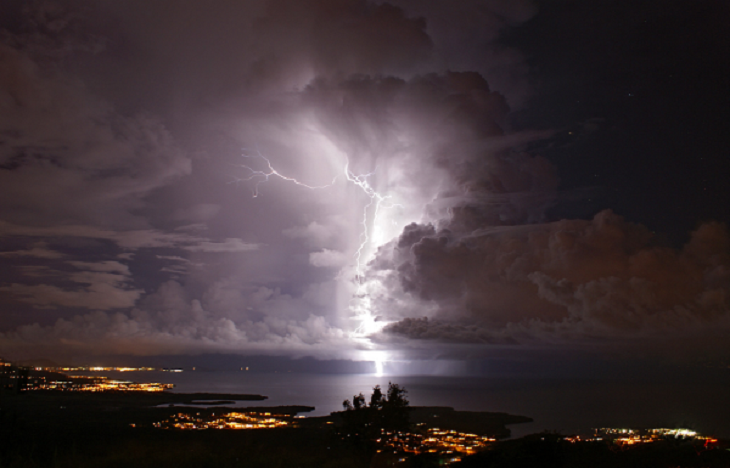
Image source - Wikimedia Commons
Are you afraid of thunderstorms? Then you should certainly avoid visiting Western Venezuela. Something really odd occurs in the air where the Catatumbo River flows into Lake Maracaibo in Venezuela. For 140 to 160 nights a year, you will find the sky above the river being pierced by almost constant lightning and producing about 280 strikes per hour. This unique phenomenon is known as the “Relámpago del Catatumbo” (relámpago means lightning in Spanish) and has been going on since as long as people can remember. The area has been marked as the most electric place on Earth and even made its name in the Guinness Book of World Records.
The lightning is so severe that it is visible from 400 kilometers away and it is so regular that ships nearby use it as a navigation aid. The Relampago del Catatumbo is regarded as the world’s greatest producer of ozone because it generates close to 1.2 million lightning discharges per year.
Related Articles:
The World Is Full of Beauty, but These Rivers Top It All
12 of the World's Strangest Natural Wonders